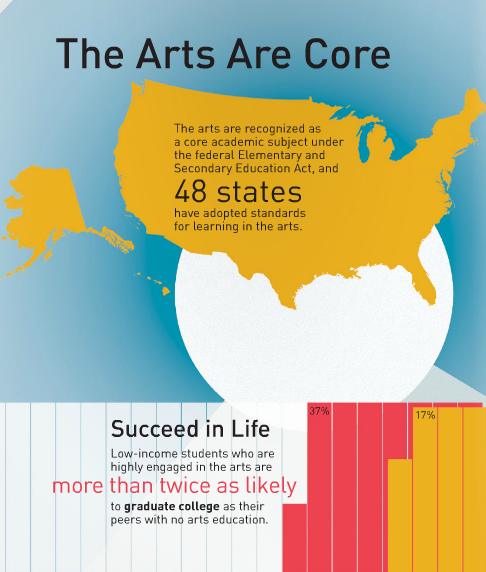Research is a powerful advocacy tool. Numerous published reports demonstrate that student involvement in the arts is linked to higher academic performance, increased standardized test scores, greater involvement in community service and lower dropout rates. This section of our website contains facts sheets, links to the latest research as well as guides to support your efforts to evaluate, plan and advocate for arts education in your district. opportunities and threats in our field. Below we have listed some featured research reports.











 This week in Washington DC, at the Arts Education Partnership’s National Forum Spotlight: Educating the Next America, we will release a new white paper, A Policy Pathway: Embracing Arts Education to Achieve Title I Goals.
This week in Washington DC, at the Arts Education Partnership’s National Forum Spotlight: Educating the Next America, we will release a new white paper, A Policy Pathway: Embracing Arts Education to Achieve Title I Goals.pencils.jpg)
 In June, California passed historic reforms to our school financing system. After four years of funding cuts, districts now have the ability to make decisions that help to restore, make improvements and set a foundation for a more responsive and outcome driven educational program at the local level.
In June, California passed historic reforms to our school financing system. After four years of funding cuts, districts now have the ability to make decisions that help to restore, make improvements and set a foundation for a more responsive and outcome driven educational program at the local level.


 The National Endowment for the Arts has released a new research report, Improving the Assessment of Student Learning in the Arts: State of the Field and Recommendations. As the field of educational assessment advances, and as alternatives to standardized tests emerge, the tools used to evaluate student learning, such as portfolio reviews, are beginning to gain acceptance. Given this development, it is even more important to examine arts educational standards and assessment tools to ensure that arts learning can become a vital force for enhancing 21st century skills.
The National Endowment for the Arts has released a new research report, Improving the Assessment of Student Learning in the Arts: State of the Field and Recommendations. As the field of educational assessment advances, and as alternatives to standardized tests emerge, the tools used to evaluate student learning, such as portfolio reviews, are beginning to gain acceptance. Given this development, it is even more important to examine arts educational standards and assessment tools to ensure that arts learning can become a vital force for enhancing 21st century skills. 
